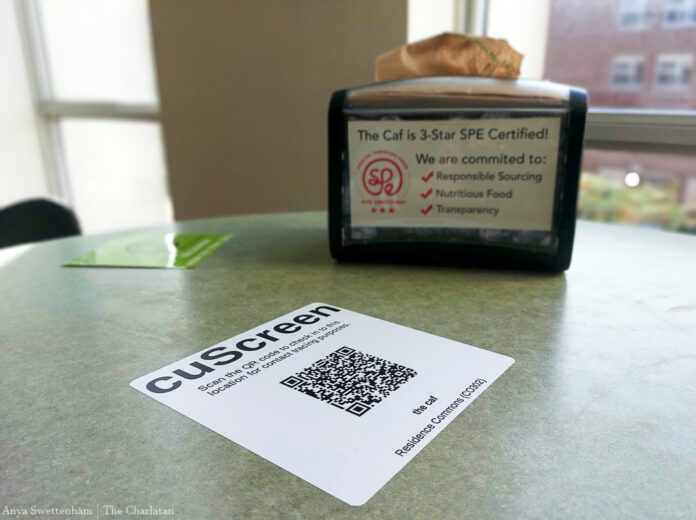
Carleton University’s residence cafeteria started offering its takeout food in reusable containers on Jan. 9.
Students can pick up reusable plastic containers with prepared meals from the cafeteria and return used ones. Upon return, containers are cleaned using industrial dishwashers before they are reused.
The residence cafeteria made the switch to a takeout-only model once in early 2020, due to COVID-19 indoor dining restrictions. Back then, the food was offered in compostable, disposable containers. Carleton University Housing and Residence Life Services announced on Dec. 17, 2021 that due to outbreaks of the Omicron variant, the cafeteria would once again only be offering takeout food.
Second-year social work student Aliyah Jarvis said the new containers mean less waste.
“I remember last year, even though the takeout containers were compostable, there was so much waste,” Jarvis said. “We would have to take out our garbage every single day.”
The cafeteria would have used almost 80,000 disposable containers in January alone, according to manager of Carleton University Dining Services Jonathan Naiberg. Now instead, about 2,000 reusable containers are in circulation. He said the reusable containers are a step towards reducing the cafeteria’s ecological footprint.
“Building habits into our day-to-day [life] is at the core of shifting societal expectations around environmentally-conscious living,” Naiberg said.
The environmental benefit of using reusable containers over disposable ones is controversial. A study from Manchester University shows that production of reusable plastic containers consumes a lot more energy than production of disposable containers. According to the study, to offset the impact of the energy consumed by its production one reusable container would have to be used anywhere from 16 to 208 times.
According to Naiberg, Dining Services hopes for the containers to be reused enough times that their environmental impact is less than if they kept using single-use packaging.
But not everyone is happy with the new containers. The shift in service also includes a decrease in food and drink options and pre-prepared meals. Fourth-year media production and design student Ethan Burgar said he was frustrated diners are only allowed to take one to-go container at a time.
“I do not like the containers because it limits the food I can carry. I usually like to eat more than one plate worth of food,” Burgar said. “The containers are small and the staff gives small portion sizes.”
On the other hand, Jarvis said she was enthused about the cafeteria’s new direction.
“I don’t love that the cafeteria is takeout, but compared to last year, the reusable containers are so much better,” Jarvis said.
The cafeteria will use the new takeout model until Jan. 29 or until COVID-19 conditions improve, according to Storey.
Featured image by Anya Swettenham.





